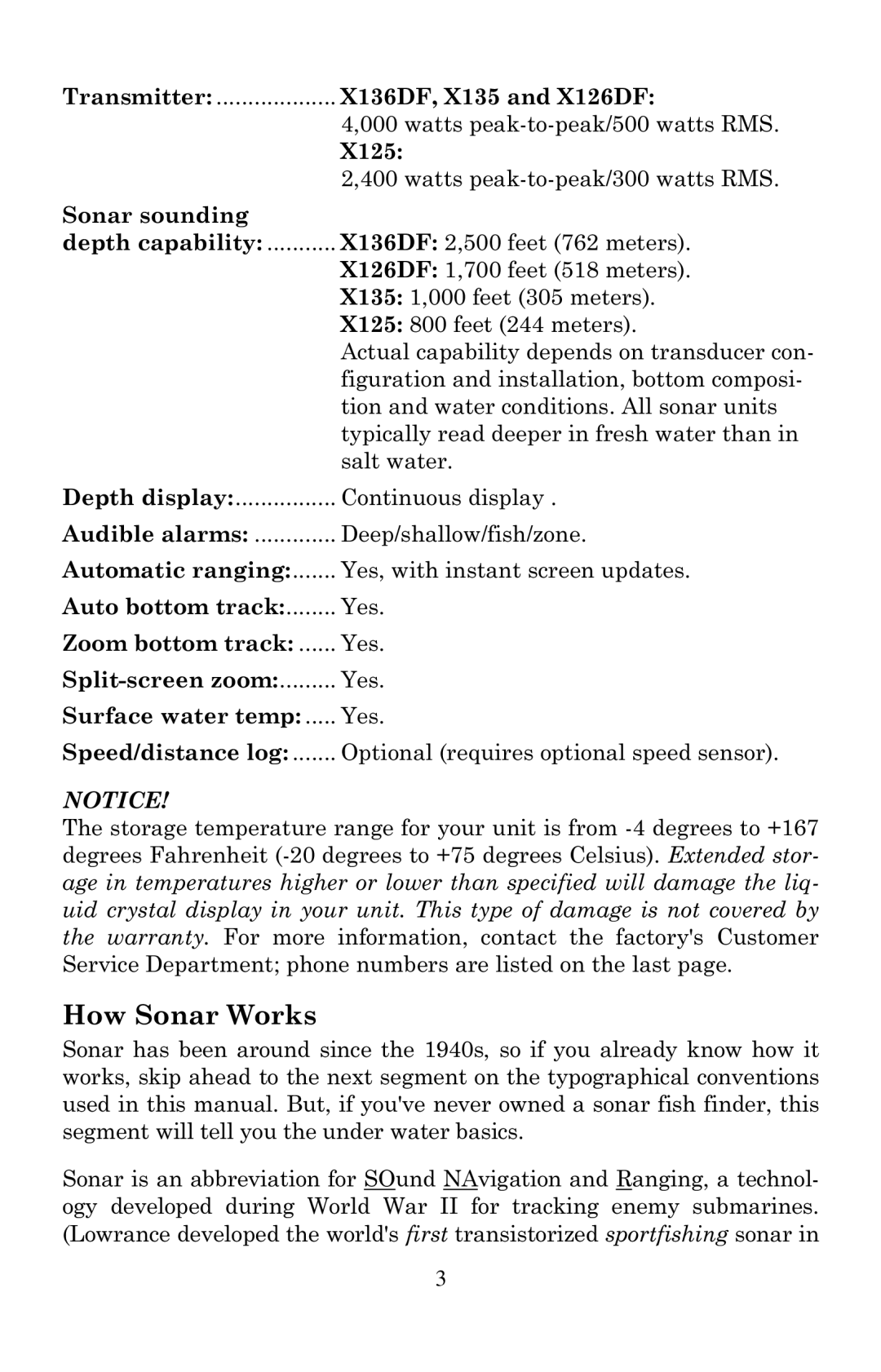X126DF, X136DF, X135, X125 specifications
Lowrance, a leading name in marine electronics, has made significant strides with its line of fish finders and chartplotters, particularly the X135, X125, X136DF, and X126DF models. These devices are engineered for anglers and boating enthusiasts seeking advanced charting, navigation, and fish tracking technologies.The Lowrance X135 is equipped with a 7-inch display, delivering a clear view of sonar readings and navigational data. Its advanced sonar technology includes a powerful 4000-watt peak-to-peak output, offering exceptional fish detection capabilities. The X135 also supports Lowrance's exclusive Broadband Sounder technology, providing detailed images of the underwater environment. This feature helps users identify fish, structure, and thermoclines with remarkable precision.
The X125 model, while similar in design, offers a 5-inch display size. The device also features a dual-frequency sonar, allowing users to switch between 50 kHz for deep water and 200 kHz for shallow water, enhancing versatility for varying fishing conditions. Its integrated GPS allows for waypoint marking and route tracking, ensuring you can revisit those promising fishing spots effortlessly.
For those looking for advanced dual-frequency capabilities, the X136DF and X126DF models take things a step further. Both models feature a split-screen view, enabling users to monitor sonar and chartplotting simultaneously. The X136DF includes advanced navigation functionalities with an internal GPS antenna, which simplifies the installation process, while the X126DF may require an external antenna for GPS functionality.
These Lowrance models come equipped with various user-friendly features, such as customizable display settings, allowing users to tailor the information presented to their preferences. Both the X136DF and X126DF support multiple languages, catering to a global audience of boaters and fishermen.
Moreover, Lowrance devices incorporate innovative networking capabilities that allow for the interconnection of multiple devices onboard. With NMEA 2000 support, users can integrate radar, autopilot systems, and other electronics for a cohesive and efficient boating experience.
In conclusion, the Lowrance X135, X125, X136DF, and X126DF offer a fantastic mix of performance, user-friendly features, and advanced technology. Each device is designed to provide valuable insights for anglers and boaters, ensuring a successful day on the water. Whether you're a novice looking to enhance your fishing experience or a seasoned pro in search of the latest technology, these models represent a reliable choice.
